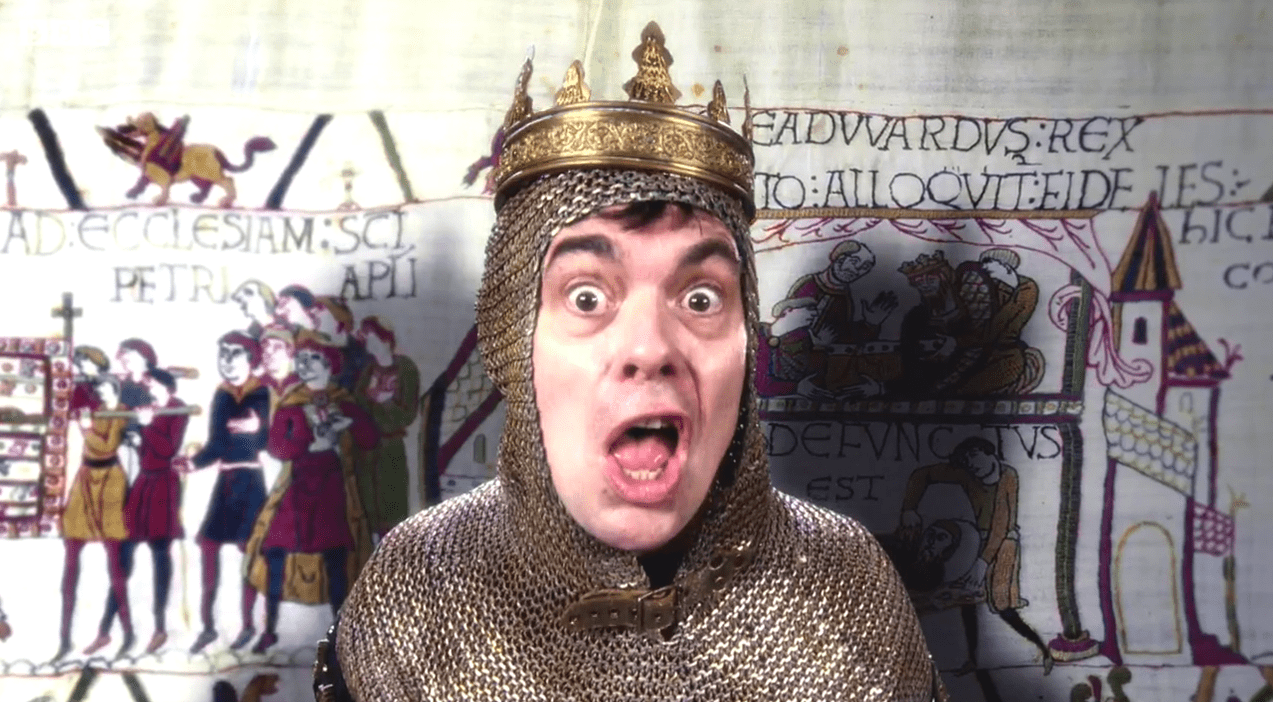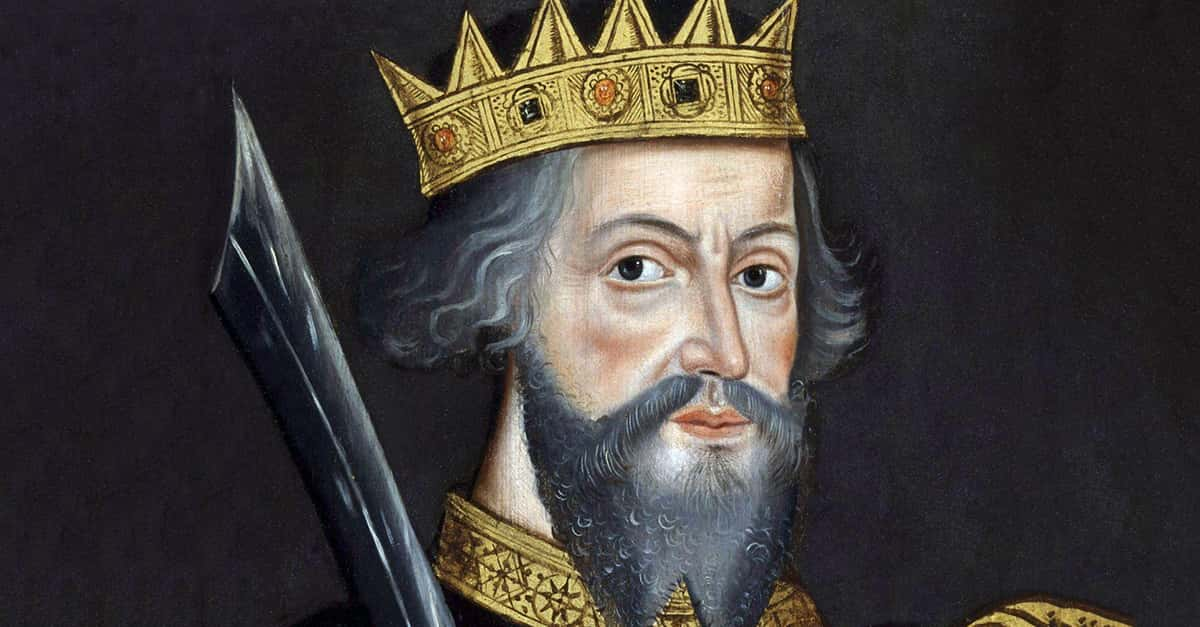"I have taken England with both my hands."
William the Conqueror was a complicated man who began life as the illegitimate son of a French nobleman and ended life as a King who had conquered northern France and England. A ruthless warrior, he was also a gifted ruler and administrator, and a highly religious man who loved is wife dearly. Here are some facts about this famous bastard turned conqueror.
46. Bastard
The man who would become known as William the Conqueror was born the bastard son of Robert, Duke of Normandy and his mistress Herlava of Falaise. As Robert had no legal heir, he made his nobles acknowledge William as his heir and to swear fealty to the boy. Shortly after, Robert went on a pilgrimage to the Holy Land from which he would never return, leaving Normandy to be squabbled over by the remaining Norman gentry.
45. A Violent Childhood
As the Norman barons battled over who would control young William, he was constantly surrounded by violence and death. One of his early supporters, Alan of Brittany was murdered, as was his head tutor Gilbert, a duke who had been a friend of William’s father. Another tutor and supporter named Turold was also killed and Osbern, William’s steward, was killed in a struggle right outside of William’s bedroom.
44. Not Dead Yet!
During the Battle of Hastings, rumors flew through the troops that William had been killed, forcing him to ride through the ranks with his helmet removed to prove he was still alive. He was lucky though, as three of his horses were killed beneath him during the battle, yet he still managed to survive, helmet or no.
43. Say You’re Sorry
According to several accounts, William gave thanks to God for his victory in England and then ordered his troops to do penance for the Englishmen they had killed that day. The Bishops of Normandy ordered them to donate food and money to the poor or to construct new churches. William himself did penance by paying for the building of Battle Abbey on the battlefield site.
42. Burn the Ships!
When he and his 700 ships landed on the shores of England, William demanded that the Normans set fire to some of his vessels. The gesture was meant to demonstrate to his troops that retreat was not an option and to steel them in their goal of defeating the English.
41. Inauspicious Beginnings
As he was being crowned on Christmas Day, 1066, the attending nobility and clerics (both Norman and English) loudly shouted their approval of the king. His Norman guards, surprised by the outburst and believing there was treachery afoot, promptly set fire to surrounding buildings in the city of London. The church filled with smoke, the congregation fled, and William was left trembling. It's said that after this day, the London city folk never really trusted the Normans again.
40. Battle, not Hastings
The battle where William defeated King Harold III to take the English throne, despite becoming known as the Battle of Hastings, did not take actually place at Hastings—it took place on a ridge near a tiny village called Battle, which is seven miles from Hastings. That's right: The Battle of Hastings was actually the Battle of Battle.
39. Religious Renaissance
William rebuilt numerous cathedrals across Normandy and by the time he died had rebuilt 9 of the 15 existing cathedrals in England. His first was the famed Canterbury Cathedral. This religious renaissance continued well into his son’s reign, by the end of which all 15 cathedrals had been rebuilt.
38. End of the Slave Trade
Before William conquered England, 10-30% of its population were slaves. William banned the trade and freed many slaves. By the end of his reign only three quarters of the slaves remained enslaved, and by the end of the 12th century slavery was dead in England.

History's most fascinating stories and darkest secrets, delivered to your inbox daily.
37. Average
Despite popular lore that suggests that he was exceptionally tall, William was of ordinary height for a medieval man, probably about 5’8”. Scientists figured this out by measuring his only remains—a thigh bone. His wife was also thought to be exceptionally short, but she too was of average height for a woman, around 5’.
 Know Your Meme
Know Your Meme
36. William the Norseman
William was actually of Viking stock. His ancestors pillaged France in the 9th and 10th centuries and were eventually given Normandy, where William was born, as a peace offering.
 Random-Acts-Stock - DeviantArt
Random-Acts-Stock - DeviantArt
35. One Way to Get a Lady's Attention
William’s wife, Matilda of Flanders, initially wanted nothing to do with him, believing that as a bastard he was beneath her notice. William supposedly snagged her by her long braids and pulled her from her horse on the street to get her attention. She eventually agreed to marry him.
34. The Invasion
William’s invasion fleet of 700 ships included an army of almost 15,000 men. His army was well-equipped with knights on horseback and archers with crossbows. On the other hand, the opposing English army consisted of some housecarls (a kind of Saxon knight) armed with axes, but also with many peasants who fought with whatever weapons they could find.

33. Pardon-Moi?
William spoke no English despite his many attempts to learn it. He was also illiterate in any language, completely unable to read or write, like many of the royalty/nobility of his time.
32. Speak Franglais, Stupid
Thanks to the French speaking William, French became the language spoken in English courts for centuries. His reign also affected the English language itself as new French based words became commonly used and Franglais was born.
31. The Tower
Among the many castles that William had built was the White Tower, which still stands today as the central tower in the Tower of London.

30. Portly Pet
General Patton “old blood and guts” had a favourite white bull terrier he named William the Conqueror. The beloved dog’s nickname was Willie.
29. A Huge Family
Millions of people in Britain, including Queen Elizabeth II, are descended from William. In fact, more than 25% of the English population is distantly related to him in some way.
 The Association of the Covenant People
The Association of the Covenant People
28. Loving Husband
He was an affectionate and loyal husband and even held off his own coronation in England until his wife Matilda could be there with him. When she died he became deeply depressed and would never entirely recover.

27. A Feudal Gesture
After he conquered England, William kept one quarter of the land for himself and gifted about two fifths to his followers if they agreed to provide him with the continued service of a certain number of knights. Englishmen were also made to swear fealty to him and provide service. This was the birth of English feudalism.
26. Can William Build It? Yes William Can!
While there were a few minor fortifications in England when William arrived, he introduced castle building to the country. Hundreds of castles were built across the land during his reign, the first shortly after he landed on the shores of Pevensey Bay.
25. A Big Family
William had nine or ten children—four sons and five or six daughters. All lived to adulthood, which in itself was unusual for the time period. Most of his immediate descendants married into noble and royal houses throughout Europe.
24. But Gundred Wasn’t His
Although several documents and even his will mention his “child” Gundred, she was not actually William’s daughter. It is more likely that she was an orphaned noble who was raised by his wife Matilda.
23. A Fate Worse Than Death?
William outlawed the death penalty. Instead, those who were guilty of a crime were blinded and castrated. Better? Who's to say...
22. City Cows
William also banned live cattle from being sold outside cities. If cattle was sold inside a city there had to be a minimum of three witnesses to the sale.
21. The Warrior King
William inherited the dukedom from his father in 1035 when he was only eight. The barons constantly rebelled, and William was continually at war with them. Once he had the barons under control he remained at war for over thirty years, conquering neighboring provinces and finally England in 1066.
20. But A Horse Finally Killed Him
After surviving countless battles and assassination attempts, William died after an accident with his rearing horse that ruptured his intestines. An infection set in and he died several weeks later.
19. He Came, He Conquered, He Left
William spent barely 5 years living in England full time. After the country was finally conquered, he spent the last 15 years of his life almost entirely in Normandy.
 galilee.com.tw
galilee.com.tw
18. The Religious Duke
William was a religious man and endowed several monasteries. He also led significant changes to the church, including outlawing both clerical marriage and the long-accepted practice of simony (buying of church offices).
17. Give Me an Excuse, I Dare You
Before conquering England, one of William's Norman vassals captured the King of England's stepson and heir to the throne, Harold, Earl of Wessex. William ransomed Harold to the English throne, but decided to keep the Earl with him. According to Norman accounts, Harold then swore an oath bequeathing the throne to William. So later, when Harold took the throne himself, William used it as justification to invade and claim the kingdom for the Normans.
16. The Circus Is Coming
William was responsible for bringing the first circus to England. He brought performing troupes of ropedancers, tumblers, and contortionists to England from France to entertain his new court.
15. Domesday Is Nigh
William ordered his representative in England to create a survey of all the lands in England to ensure he was receiving all the revenue that he was entitled to and to cement his control over the barons, most of whom were now Norman. The Domesday Book recorded that only 5% of the land still remained in English hands after William’s coronation. The book was considered one of the most significant administrative accomplishments of the time.

14. Better Beheading
William also introduced beheading by the sword to England. This new method was considered more honorable than the axe as it was more like dying in battle. The victim would stand or kneel upright, and it was a punishment generally reserved for high ranking criminals and traitors.
13. Down by the Bayeux
The Bayeux Tapesty is a 231-foot band of linen that is embroidered with the story of William’s conquest of England and was hung in Bayeux Abbey in France. It was first referred to by historians in 1476, although its actual date of origin in unknown.
12. Trial by Combat
William brought the concept of trial by combat to England, where it was not abolished until the 19th century.

11. His Son The Rebel
When William refused to give Normandy to his second son Robert, he joined with other nobles in an attempt to overthrow his father. William would eventually forgive Robert after Matilda intervened.
10. Bad Brother
William had his half-brother Odo named Bishop of Bayeux and at one point left him in charge of England. However, Odo was a poor leader, governing badly and oppressing the people, so William returned to England and put his brother in prison for five years. The perks of kingship.
9. Squabbling Sons
When William died, he left Normandy to his son Robert, England to William Rufus and money to his youngest living child Henry. The three brothers would end up battling for control of Normandy and England for years after his death. In the end, William Rufus died, Robert spent 28 years in prison and Henry became both King of England and Duke of Normandy.
8. Harrying of the North
When the North of England rebelled, William had his soldiers kill the rebels and then burn their villages and farms. He also killed all the animals and had remaining food stocks destroyed, plunging the entire area into famine. Chroniclers told tales of people eating dogs, cats and even human flesh to survive.
7. His Favorite Horse
William rode a huge black Andalusian warhorse into battle. The horse was a gift from King Alfonso of Spain, given to the young William when he visited there on a pilgrimage.
 lookandlearn.com
lookandlearn.com
6. A Bad Loser
He once allegedly broke a chessboard over the head of the Prince of France after losing a game of chess. His own son, Henry I, had chess pieces thrown in his face by another Prince of France who had lost to him.
5. Momma's Boy
When a town under siege hung the skins of animals on their walls as a way to mock William (and his mother) about being descended from a tanner, he had the hands and feet of the townsfolk cut off in retaliation.

4. Explosive
After William died of an infection from ruptured intestines, something even more disgusting happened at his funeral. When priests tried to stuff the corpulent king into his coffin, they pushed down on his abdomen, causing those ruptured intestines to explode everywhere. Reportedly, his loyal mourning subjects ran as fast as they could for the nearest exit when they caught a whiff of the putrid odor emanating from their ruler.

3. He Slipped but…
According to contemporary sources, when William stepped off his ship and onto English soil, he fell. On the ground, he grabbed the earth with both hands and cried out "I have taken England with both my hands."
2. Fad Dieter
He gained so much weight later in life that the French king described William as a pregnant woman about to give birth. In an effort to slim down, William tried his own version of a fad diet, drinking only wine and spirits for a time and refusing any solid food. It didn’t work.

1. No One Called Him Conqueror
While he was alive, William was known either as “the Great” or “the Bastard,” depending upon how people felt about him. The first references to the nickname by which he's known today, “the Conqueror,” didn’t appear until over thirty years after his death.
Sources: 1, 2, 3, 4, 5, 6, 7, 8, 9, 10, 11, 12, 13, 14, 15, 16, 17, 18, 19, 20, 21, 22, 23, 24, 25, 26, 27, 28, 29, 30, 31, 32, 33












































